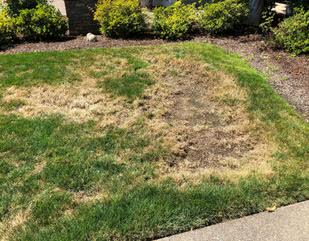Strategic Plans at RVM
Suggestions about Strategic Plans, Part 1
by Ron Constable
In one of Stan Solmonson’s weekly reports on the status of things RVM, he noted that among the decisions made by the RVM Board at their July meeting was a request for RVM & PRS to study more deeply the proposed move of Marketing Offices into a new Welcome Facility down by the Ellendale entrance (along with a Human Relations interview location and a new Golf Course Club House). They would return to the RVM Board to discuss approval at the next quarterly meeting. The Board also requested that a 3-5 year Strategic Plan be developed, at least referencing a plan done a number of years ago.
I sent an e-mail on July 20th giving kudos to the RVM Board of Directors for directing that the PRS/RVM staff create a 3-5 year Strategic Plan for RVM. I think there should be a plan that is relatively detailed for the upcoming 3-5 years, and then looks 10 and even 20 years out for trends and the impacts on RVM implied by those trends. The RVMList was cc’d on that e-mail, and some stimulating conversation ensued.
I feel the opening element of any strategic plan is: “what do you want to be as this plan’s time span comes to a close?” A simple answer: “The West Coast’s Premier Retirement Community,” as declared at the Ellendale entrance to our lovely campus, and on numerous RVM vehicles. Clearly, quality of accommodations and amenities—more than quantity—are major factors. Food and restaurant ambience are also major factors. All of this requires having the budget to operate and maintain these things over years and even decades, implying ample long-term maintenance and upgrade and replacement budgets.
One major point from e-mail exchanges about maintenance and refurbishment: To the residents, quality is highly dependent on the resident/service provider interface. Much of this is dependent on having quality employees, who know their tasks and are friendly and as accommodating as possible. A good part of that comes from knowing the RVM physical and personnel environment well, which is dependent to a large degree on longevity. All these elements are dependent on having a firm employee income basis, so that they are encouraged to stay, learn the organization, the campus and especially the people.

A front lawn on Quail Point Circle
While we residents don’t have clear insight into the details, it seems obvious that being able to provide valid input to the budgeting process would be beneficial. Along those lines, Bob Buddemeier provided some specific examples of service—in one very visible case, landscaping—that the staff should have been able to provide; but the resident was told upon his complaint/request for service that there simply weren’t funds for that—although if he wanted to provide the basic material (sod, in this case) the staff would put it down. It seems quite clear that sod is RVM’s, not the resident’s, responsibility!
I hereby suggest that a system be developed wherein residents can document specific problems for which the resolution has been denied for monetary reasons; these can be presented in a readily apparent and unavoidable manner to upper RVM staff when the time for budget allocations approaches. That means tracking the problems (having insured a work order has been submitted, of course), insuring that they aren’t solved prior to submission, and then making a concise, clear package to put at the doorstep of management. I’ve heard many complaints over the two-plus years we’ve been here that ‘maintenance ain’t what it used to be,’ the ‘amenities are decaying,’ refurbishment (carpets, furniture, etc.) isn’t what it used to be, etc. While the general level of such complaints is important, and can have some impact, specific examples would be much clearer, less easily shrugged off as ‘just disgruntled residents,’ and provide a specific, quantifiable basis for budget allocation adjustments.
I solicit suggestions for how to do this.



Leave a Reply
Want to join the discussion?Feel free to contribute!